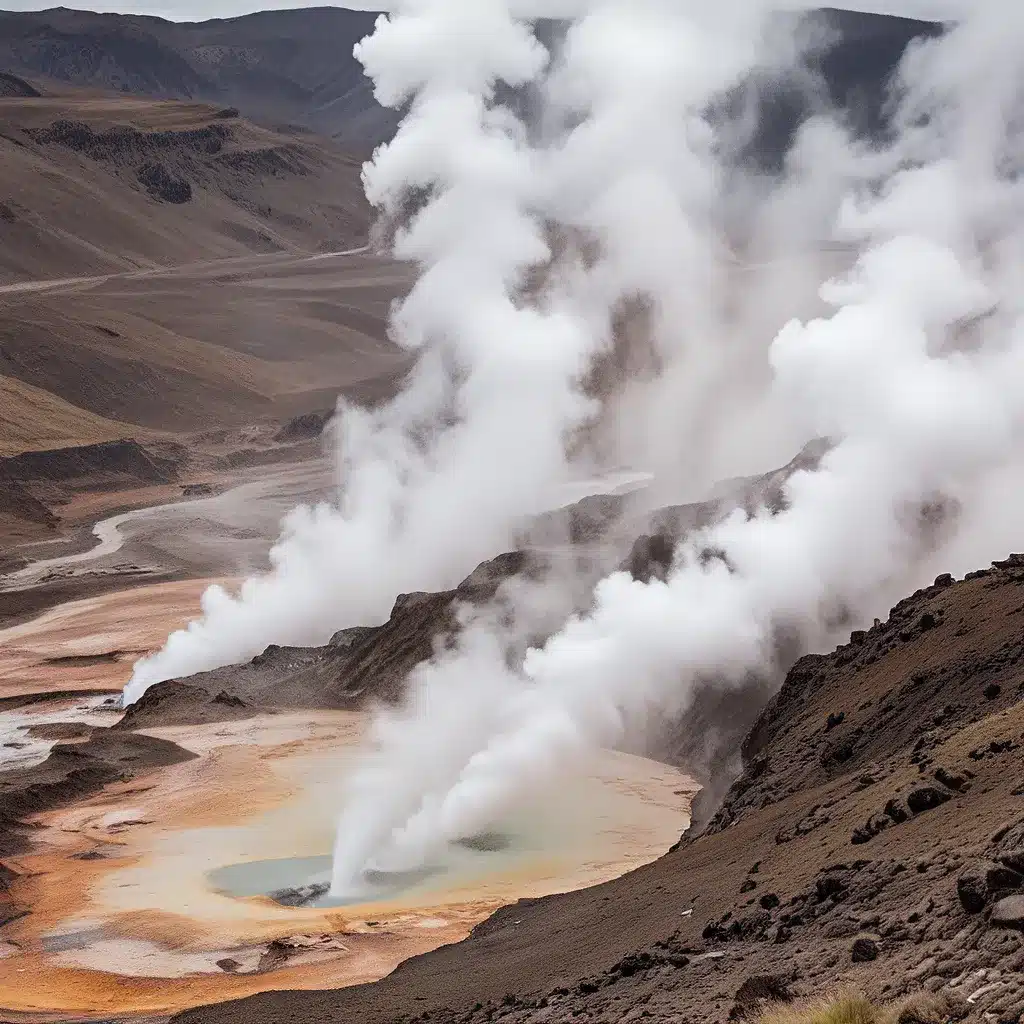
Imagine a world where we could harness the boundless energy that lies beneath our feet – a world powered by the Earth’s own internal heat. Well, my friends, that world is closer than you might think. Welcome to the captivating realm of geothermal energy, where the planet itself becomes our limitless source of clean, renewable power.
Unleashing the Earth’s Untapped Potential
As I delve into this topic, I can’t help but feel a sense of excitement and wonder. You see, geothermal energy is not some distant, futuristic concept – it’s a technology that’s been around for decades, quietly powering communities and transforming the way we think about energy.
Take the city of Boise, Idaho, for example. Since 1983, this forward-thinking city has been using the hot water that naturally rises to the surface in a nearby geological fault to heat homes, businesses, and even the city hall. It’s the largest geothermal heating system in the United States, and it’s been saving the city a cool (or should I say, hot) $750,000 per year in energy costs.
But Boise’s success story is just the tip of the iceberg. Experts around the world are now recognizing the true potential of geothermal energy, thanks to advancements in deep-drilling technology and a growing understanding of the Earth’s underground formations.
Unlocking the Power of the Earth’s Core
So, how exactly does geothermal energy work? It all starts with the fact that the Earth’s interior is insanely hot – we’re talking temperatures that can reach up to 7,000 degrees Fahrenheit at the core. This incredible heat is the result of radioactive decay and the immense pressure of the planet’s layers.
Now, here’s where it gets really interesting. By drilling deep into the Earth’s crust, we can tap into this vast reservoir of heat and use it to generate electricity or directly heat buildings. This technology, known as deep geothermal, is a game-changer in the world of renewable energy.
The beauty of deep geothermal is that it’s not limited to a few lucky locations with natural hot springs or geysers. Experts believe that if we dig deep enough, we can find high-enough temperatures to power our energy needs just about anywhere on the planet. As one industry analyst put it, this technology could be the “holy grail” of renewable energy.
Overcoming the Challenges of Deep Geothermal
Of course, accessing this deep, underground heat isn’t as simple as just sticking a straw in the ground. There are some significant technical and financial hurdles to overcome.
First and foremost, the drilling process required for deep geothermal is incredibly expensive, often costing millions of dollars per well. And the risk factor is high, as you never know exactly what kind of geological formations you’re going to encounter. It’s a bit like playing geological roulette.
Another concern is the potential for induced seismicity, or man-made earthquakes. There have been rare instances, like the 5.4-magnitude quake in Pohang, South Korea, where the high-pressure injection of fluids during geothermal drilling has triggered tremors.
But the experts aren’t deterred. They know that with the right risk-mitigation strategies and financial incentives from governments, deep geothermal can become a reliable and scalable source of renewable energy.
The Global Geothermal Revolution
While the United States has been a bit of a laggard in the geothermal space, other countries around the world are leading the charge. Take Iceland, for example – a volcanic island nation that has embraced geothermal with open arms.
More than 90% of Icelandic homes are heated by direct heat from geothermal sources, and the country is a global leader in geothermal electricity generation. The Chinese, too, have been rapidly expanding their geothermal district heating systems, becoming the world’s largest deployer of this technology.
And it’s not just countries with obvious geothermal potential that are getting in on the action. Germany, for instance, has set ambitious goals to tap into its geothermal resources, aiming to increase its geothermal heat production from 12 terawatt-hours (TWh) today to a staggering 100 TWh by 2050.
Geothermal’s Vital Role in the Clean Energy Transition
As the world races to decarbonize its economies and meet ambitious climate targets, geothermal energy is emerging as a critical piece of the puzzle. Unlike intermittent renewable sources like wind and solar, geothermal can provide baseload power – reliable, around-the-clock electricity that can help compensate for the variability of other renewables.
And the potential is massive. According to a recent report by the U.S. Department of Energy, geothermal electricity generation in the United States could increase 26-fold by 2050, providing a staggering 85% of the country’s electricity needs.
But it’s not just about electricity. Geothermal can also play a vital role in heating and cooling our homes and buildings, with the potential for more than 17,500 direct-heating installations and the ability to heat and cool the equivalent of over 28 million households using geothermal heat pumps by 2050.
Embracing the Future of Geothermal Energy
As I reflect on the incredible potential of geothermal energy, I can’t help but feel a sense of optimism about the future. Sure, there are challenges to overcome, but the rewards of tapping into the Earth’s limitless power are simply too great to ignore.
And the best part? This isn’t some distant, futuristic dream – geothermal is very much a technology of the here and now. With the right investments, the right policies, and the right mindset, we can unlock the true power of the Earth and usher in a new era of clean, reliable, and sustainable energy.
So, my friends, let’s embrace the future of geothermal energy. Let’s be the ones who harness the heat beneath our feet and revolutionize the way we power our world. After all, the Earth has been storing this energy for us all along – all we have to do is reach out and grab it.

